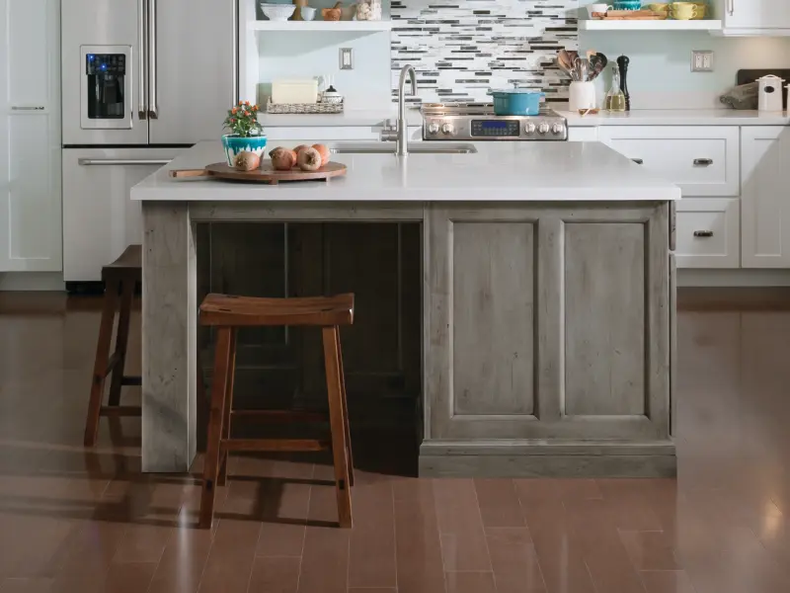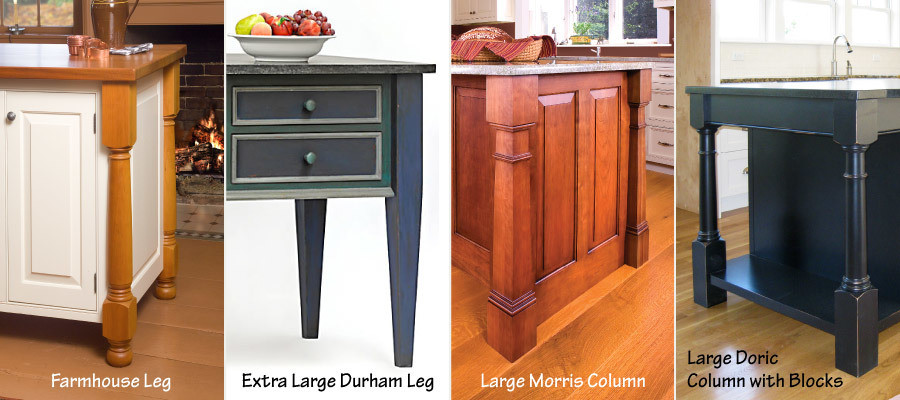A Guide to Picking the Perfect Cooking Area Island for Your Home
Selecting the excellent kitchen area island is a multi-faceted choice that can dramatically affect both the capability and aesthetic appeals of your home. Understanding your cooking area's spatial characteristics is the initial step, guaranteeing that the island fits perfectly without interfering with the flow. Beyond space considerations, recognizing the main function of the island-- be it for dish preparation, dining, or extra storage space-- is important. The selection of products and coatings also plays an important function in harmonizing the island with your kitchen area's total design. As we discover these elements even more, the nuances of each decision will end up being clear.
Analyzing Your Space
Before picking a kitchen island, it is vital to thoroughly examine your area to make certain the addition will be both useful and visually pleasing. Begin by gauging the offered area, including the width, size, and elevation of the cooking area. Exact dimensions are critical to avoid purchasing an island that overwhelms the room or one that is disproportionately little.
Think about the existing format and exactly how the island will certainly integrate with the current website traffic flow. A well-placed island ought to not obstruct paths or hinder access to crucial appliances, such as the fridge, sink, and range. Leave ample clearance area-- normally around 36 to 48 inches on all sides-- to enable comfortable movement and workspace effectiveness.
Next, review the all-natural light and sightlines within your kitchen. An island that obstructs a window or interrupts visual cohesion can make the room really feel cramped and dark. Think regarding how the island's positioning will certainly affect lights and visibility, guaranteeing it boosts rather than detracts from the kitchen's setting.
Establishing the Function
Establishing the function of your kitchen island is a crucial action in guaranteeing it meets your certain needs and choices. Before delving into style or dimension factors to consider, it is important to clarify what primary feature the island will serve in your kitchen area. Will it be a main center for meal preparation, an informal dining location, or possibly an added storage space solution?
For those that delight in food preparation, integrating appliances such as a cooktop or sink may be required. In addition, ample counter space for blending and chopping, in addition to available storage space for cooking area devices and components, can change the island right into a reliable workstation. Conversely, if the island is intended to facilitate social interactions or offer as a dining location, seating plans end up being critical. In this instance, ensuring enough legroom and surface for comfy dining experiences is vital.

Picking the Right Dimension
Choosing the right dimension for your kitchen area island is a balance of capability and room optimization. A suitable cooking area island should provide enough workspace while making sure that movement around the kitchen remains unimpeded. Begin by gauging your kitchen area area; a minimum clearance of 36 to 42 inches around the island is required to allow for comfortable activity and accessibility.
The dimensions of the island ought to mirror the original source its desired use. For circumstances, if the island will serve largely as a prep area, a width of 24 to 36 inches could be adequate. However, if it is to suit seating, you must take into consideration a bigger size, normally gauging a minimum of 48 inches in size. Islands devoted to appliances or sinks may require additional space to house these features sufficiently.

Lastly, ensure that the island's dimension enhances the overall kitchen area format, avoiding any kind of overwhelming presence that could take away from the kitchen area's aesthetic and energy - kitchen island legs. Cautious planning and precise dimensions will help you attain a efficient and harmonious kitchen environment
Choosing Materials and Finishes
After establishing the ideal size for your kitchen island, the following step entails selecting appropriate materials and finishes. The choice of products dramatically impacts both the aesthetic appeal and capability of your kitchen area island. Popular products for counter tops consist of quartz, butcher, and granite block, each offering distinct advantages.
Along with the counter top, think about the materials for the space station. Strong wood supplies a classic, strong appearance, while stainless-steel supplies a streamlined, modern look and is simple to tidy. Repainted coatings can present a sprinkle of color, with choices ranging from low-key pastels to bold, lively colors.
When picking surfaces, ensure they complement the overall cooking area layout. Matte surfaces offer a contemporary feel, while shiny surfaces can create a polished, premium appearance. Take note of the longevity of finishes, especially in high-traffic locations, to preserve the island's look gradually. Choosing the appropriate materials and coatings will boost both the performance and visual charm of your kitchen area island.
Incorporating Useful Attributes
Incorporating practical attributes into your kitchen area island can significantly enhance its energy and convenience, changing it right into a versatile focal point of your cooking area. One essential feature to think visit site about is added storage space. Integrating cabinets, drawers, and open shelving can give much-needed room for cooking equipment, utensils, and little appliances, aiding to maintain a clutter-free environment.
Another useful addition is a built-in sink or cooktop, which can simplify meal preparation and clean-up processes. A sink can promote jobs such as washing vegetables and cleaning up recipes, while a cooktop can permit food preparation directly on the island, cultivating a more interactive and social food preparation experience.
Think about incorporating seating choices, specifically if your kitchen area increases as a casual dining location. Bar stools or built-in benches can i thought about this change the island into a multifunctional space for meals, homework, or informal celebrations.
Lastly, incorporating electric outlets right into your cooking area island can enhance its usefulness. Outlets give practical access for small cooking area devices, billing stations for digital gadgets, and additional lighting choices.
Verdict

Prior to choosing a cooking area island, it is crucial to extensively evaluate your space to make sure the addition will be both practical and cosmetically pleasing.Picking the appropriate size for your kitchen island is a balance of functionality and space optimization. kitchen island legs. A perfect cooking area island ought to provide sufficient work space while making certain that movement around the cooking area stays unimpeded.Incorporating practical features right into your kitchen island can dramatically improve its energy and convenience, changing it right into a flexible centerpiece of your kitchen.In conclusion, selecting the perfect cooking area island necessitates a comprehensive analysis of the offered room, clarity concerning its primary function, and careful consideration of the suitable dimension and materials